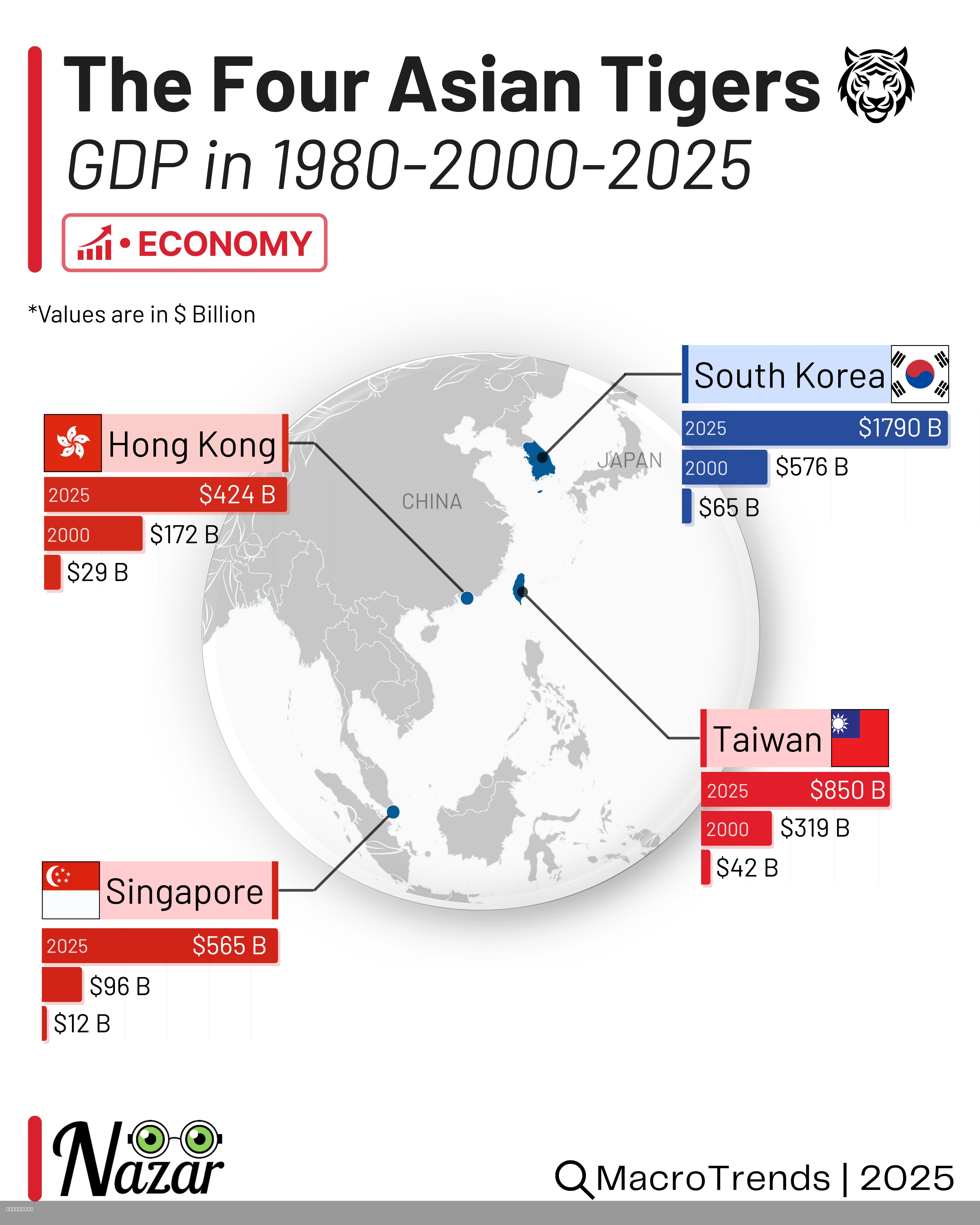Four Asian Tigers Economic Development Map


Alex Cartwright
Senior Cartographer & GIS Specialist
Alex Cartwright is a renowned cartographer and geographic information systems specialist with over 15 years of experience in spatial analysis and data...
Geographic Analysis
What This Map Shows
This map highlights the economic development and growth trajectories of the Four Asian Tigers: South Korea, Taiwan, Hong Kong, and Singapore. Known for their rapid industrialization and high economic growth rates from the 1960s to the 1990s, these regions have become models for economic development worldwide. The visualization provides a snapshot of their economic indicators, such as GDP growth, trade volumes, and key industries, illustrating how these factors shaped their transformation into advanced economies.
Deep Dive into Economic Development of the Four Asian Tigers
The economic success of the Four Asian Tigers is a remarkable tale of transformation. Each region embarked on its development journey with unique strategies, yet they all share common themes that propelled their rapid growth.
South Korea, for instance, focused on export-oriented industrialization. After the Korean War, the government implemented policies to promote heavy industries, such as steel and shipbuilding. By investing heavily in education and fostering a skilled workforce, South Korea transitioned from an agrarian economy to a technological powerhouse, known for companies like Samsung and Hyundai. Interestingly, South Korea’s GDP per capita increased from around $100 in the 1960s to over $34,000 today, showcasing its remarkable economic leap.
Taiwan's story is similarly compelling. In the 1980s, the government shifted from agriculture-based policies to manufacturing and technology-oriented initiatives. The establishment of export processing zones attracted foreign investment, leading to a boom in electronics and machinery sectors. As a result, Taiwan became a global leader in semiconductor manufacturing. Have you noticed how brands like ASUS and HTC originated from this thriving tech hub? Today, Taiwan boasts a GDP per capita of over $28,000.
Hong Kong stands out as a unique case. Its strategic location as a gateway between China and the West facilitated its growth as a global financial center. The laissez-faire economic policies, combined with a robust legal framework and efficient infrastructure, attracted multinational corporations. Even after its handover to China in 1997, Hong Kong maintained its economic dynamism, contributing significantly to its GDP, which is currently around $46,000 per capita.
Singapore, often referred to as the “Lion City,” transformed from a trading post to a thriving global commerce and finance hub. Its government adopted a proactive approach, investing in education, healthcare, and infrastructure. The establishment of free trade agreements and its strategic location along crucial shipping routes further accelerated its growth. Today, Singapore boasts a GDP per capita exceeding $65,000, making it one of the wealthiest nations in the world.
Regional Analysis
Analyzing the regions represented on the map reveals interesting contrasts and similarities among the Four Asian Tigers. For instance, South Korea and Taiwan both heavily invested in technology and education, resulting in a highly skilled workforce. However, South Korea's focus on conglomerates has led to a different economic structure compared to Taiwan's small and medium-sized enterprises.
In contrast, Hong Kong and Singapore have become more service-oriented economies. Hong Kong thrives on finance and trade, while Singapore has diversified its economy to include finance, logistics, and biotechnology. Interestingly, despite their differences, all four Tigers have successfully leveraged globalization, becoming integral players in the global economy.
Significance and Impact
Understanding the economic journey of the Four Asian Tigers is essential not just for historians or economists, but for anyone interested in the dynamics of global development. Their stories illustrate how targeted government policies, investment in human capital, and openness to trade can yield extraordinary results.
Moreover, the lessons learned from the Four Asian Tigers are increasingly relevant today, especially for developing countries aiming to replicate their success. As we witness rapid economic changes and challenges due to globalization, climate change, and technological advancements, the adaptability and resilience of the Tigers provide valuable insights. Looking ahead, will other regions embrace similar strategies to carve their paths in the global economy? Only time will tell, but the legacies of the Four Asian Tigers will undoubtedly continue to influence economic policies worldwide.
Visualization Details
- Published
- August 3, 2025
- Views
- 140
Comments
Loading comments...